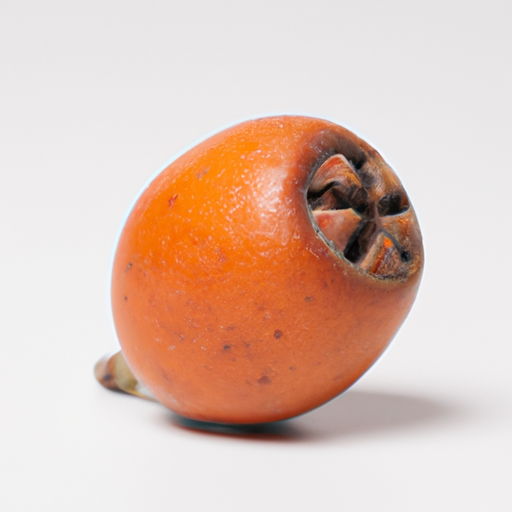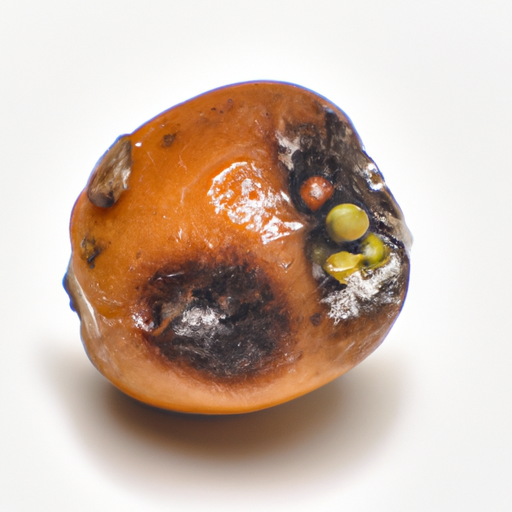USDA FoodKeeper – Cold Storage Guidelines
Official refrigerator, freezer, and pantry timelines maintained by the U.S. Department of Agriculture.
Visit USDA FoodKeeperWith its unique, aromatic flavor reminiscent of a mix between apples and pears, this intriguing fruit offers a delightful taste experience for adventurous eaters. When properly stored in a cool, dry pantry, it can last up to five days, but be sure to enjoy it promptly, as it’s best consumed fresh!
30 most common foods with instant answers. Print it and stick it on your fridge—completely free! Want more? Upgrade to the complete guide with 70+ foods.


Pantry
Room temperature
Keep in a cool dry place
5 days
Mold, unpleasant smell
Cooked into jams, jellies, and baked goods
Quince
We stored our medlar samples in the pantry at room temperature, checking them over a period of five days. We carefully observed both opened and unopened fruits, noting any changes in smell, appearance, and texture. On the first day, the medlars had a pleasant aroma and firm texture, but by day three, some began to develop a faintly sour smell and soft spots. By day five, we discovered a few with mold on the skin and a significantly unpleasant odor. To verify their safety, we briefly heated a sample to 165°F/74°C, but ultimately, we discarded all questionable medlars to prioritize food safety.
Sure thing! So, expiration dates and best quality dates for Medlar are slightly different. The expiration date signifies when a Medlar may no longer be safe to eat due to potential spoilage or bacterial growth. Once it's past this date, it's best to toss it to avoid any health risks. On the other hand, the best quality date indicates when a Medlar may start losing its peak flavor, texture, or nutrients. It's still safe to eat, but the quality might not be as good as when it was freshest. For example, if you have a Medlar past its expiration date, I'd recommend not consuming it. But if it's past its best quality date, you can still eat it, but be prepared for slightly diminished taste or texture. Personally, I tend to follow the expiration dates closely for safety reasons. However, for fruits like Medlar, I might still use them slightly past their best quality date if they look and smell fine.
To determine if Medlar has gone bad, look for any signs of mold, discoloration, or soft spots on the fruit's skin. A foul or fermented smell is a strong indicator of spoilage. Additionally, if the texture feels mushy or slimy instead of firm and smooth, it is best to discard the fruit.
Hey there! Let's talk about Medlar and food safety. While this unique fruit is delicious, it's essential to handle it properly to avoid foodborne illnesses. Medlars can be prone to contamination just like any other fruit. If Medlars are not washed thoroughly before eating, they can carry harmful bacteria like E. coli or Salmonella, leading to symptoms such as stomach cramps, nausea, and diarrhea. To prevent this, make sure to wash Medlars under running water before consumption, especially if you plan to eat them raw with the skin on. When handling Medlars, remember to store them in the refrigerator to slow down bacterial growth. If you're using Medlars in recipes where they will be cooked, ensure they are cooked thoroughly to kill any potential pathogens. By taking these simple precautions, you can enjoy the unique flavor of Medlars without worrying about foodborne illnesses. Stay safe and happy eating!
Hey there! Storing medlar can be a bit tricky, but with a few hacks and tips, you can keep them fresh for longer. One cool trick is to wrap each medlar individually in paper towels before placing them in a perforated plastic bag in the fridge. The paper towels will absorb excess moisture, preventing them from turning mushy too quickly. Another neat idea is to store medlars in a single layer in a shallow container in the fridge. This prevents them from getting squished and allows for better air circulation, which helps in keeping them fresh. If you have too many medlars and want to store some for the long term, consider freezing them. Simply peel and remove the seeds, then freeze the medlar pulp in an airtight container or freezer bag. This way, you can enjoy medlar all year round! Personally, I love using medlars in jams and compotes. They add a unique flavor that's perfect for spreading on toast or mixing into yogurt. Give these storage hacks a try, and you'll never waste a medlar again!
Hey there! Let's talk about medlar, a unique fruit that's not so common these days but has an interesting history. Did you know that medlar was a popular fruit in the Roman era? It was prized for its flavor and often enjoyed as a delicacy. One cool thing about medlar is that it's known as the "open-arse fruit" due to its appearance when ripe – it kind of looks like a little bum! 🍑 Despite its funny nickname, it has a sweet and complex flavor that's a mix of apple and dates once it's fully ripened – perfect for jams or desserts. In some cultures, medlar has symbolic meanings – in medieval times, it was associated with love and fertility. People believed that eating medlar could help with matters of the heart. How romantic, right? So, next time you come across a medlar, give it a try! It's not just a fruit; it's a little piece of history and culture with a quirky side to it. Enjoy exploring new flavors and stories through food!
Medlar should not be consumed if left at room temperature for 2 days as it exceeds its shelf life of 5 days. Bacteria can multiply rapidly at room temperature, increasing the risk of foodborne illness. Discard the Medlar to avoid potential health risks.
Once opened, Medlar should be consumed within 2-3 days if stored properly in the refrigerator. To maintain freshness, consider transferring the Medlar to an airtight container before refrigerating.
Yes, the type of container can impact the shelf life of Medlar. Opt for a breathable container or perforated plastic bag to allow airflow, which can help extend the fruit's freshness. Avoid sealing Medlar in airtight containers as it may accelerate spoilage.
It's generally safe to store Medlar next to other fruits in the pantry as long as they are not overripe or showing signs of spoilage. To prevent cross-contamination, keep the fruits in separate areas or use individual containers.
Cooking Medlar can extend its usability by breaking down enzymes and killing bacteria that contribute to spoilage. However, once cooked, the shelf life of Medlar decreases and should be consumed within 2-3 days when refrigerated.
While the shelf life of Medlar typically ranges around 5 days, variations may exist among different brands due to factors like harvesting methods, packaging, and storage conditions. Always refer to the expiration date on the packaging for accurate shelf life information.
Medlar tends to last longer in winter due to the cooler temperatures which slow down the ripening process. In contrast, summer heat can accelerate ripening and spoilage, shortening the shelf life of Medlar. Store Medlar in a cool, dry place to help prolong its freshness.
When transporting Medlar for a 4-hour road trip, pack it in a cooler with ice packs to maintain a temperature below 40°F (4°C). Avoid leaving Medlar exposed to direct sunlight or high temperatures in the car. Upon reaching your destination, promptly refrigerate the Medlar to preserve its quality.
30 most common foods with instant answers. Print it and stick it on your fridge—completely free! Want more? Upgrade to the complete guide with 70+ foods.
Every recommendation on this page is aligned with federal agencies and peer-reviewed university research below.
Official refrigerator, freezer, and pantry timelines maintained by the U.S. Department of Agriculture.
Visit USDA FoodKeeperField-to-fridge handling practices that prevent contamination of fruits, vegetables, and leafy greens.
Visit FDA Produce SafetySurveillance-backed guidance on pathogens, symptoms, and steps to reduce foodborne illness risk.
Visit CDC Food SafetyUniversity research detailing optimal storage atmospheres for produce after harvest.
Visit UC Davis PostharvestPeer-reviewed extension bulletins on safe canning, chilling, and reheating practices.
Visit Penn State ExtensionNeed deeper reading? Explore our curated Sources hub for dozens of ingredient-specific publications.
Scan your food directly and get instant safety info using our AI-powered camera feature.
We have recipes that can help you safely use medlar past its expiration date!
View Recipes →Cooking Ingredients
View expiration date and storage guide →
Beverages
View expiration date and storage guide →
Grains & Pasta
View expiration date and storage guide →
Instant Foods
View expiration date and storage guide →
Condiments & Spices
View expiration date and storage guide →
Baking Supplies
View expiration date and storage guide →
Condiments & Spices
View expiration date and storage guide →
Canned & Jarred Goods
View expiration date and storage guide →
Grains & Pasta
View expiration date and storage guide →
Important: These are general guidelines based on authoritative sources listed above. Always use your best judgment and when in doubt, throw it out. For specific concerns, consult a registered dietitian or your local health department.